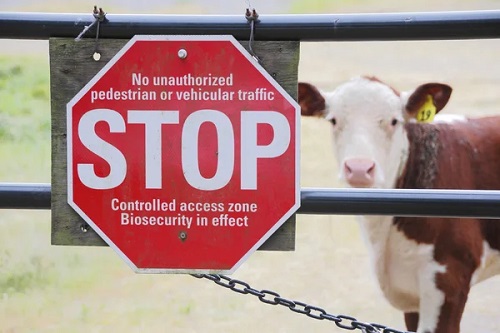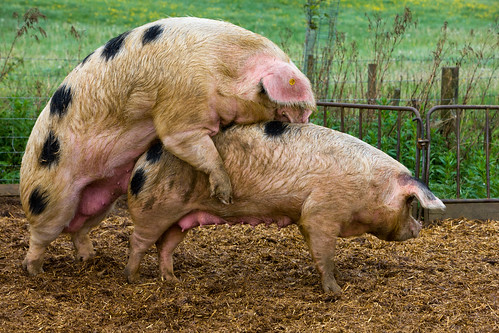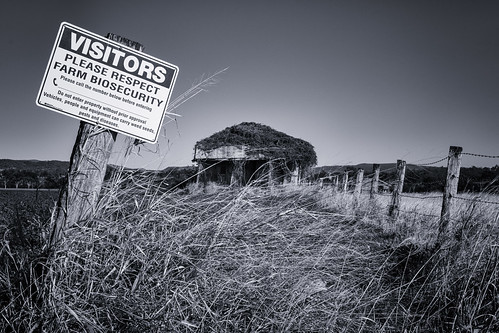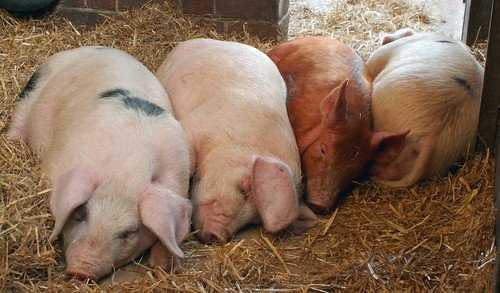Biosecurity is a set of measures taken to prevent the spread of harmful, disease-causing agents or organisms among animals and on a livestock farm. Diseases generally reduce the productivity and yield of animals as well as increase labor and veterinary costs. Diseases also reduce the market value of animals and animal products resulting in reduced farm income. Apart from the economic losses associated with diseases, both the environment and human health could be at risk. The strongest protection against disease is adopting effective biosecurity measures at the farm level.
Biosecurity Planning
It is important that farm owners and managers put biosecurity measures in place on their farms to reduce the risk of disease outbreaks and economic losses. This starts with biosecurity planning. Biosecurity planning is an essential part of ensuring effective biosecurity measures are in place. It involves identifying and assessing the risks of disease introduction and spread within a farm and implementing measures to mitigate those risks.
With a biosecurity plan, farmers will be able to:
- Protect the health of humans including themselves and other farm workers
- Maintain or enhance the health and productivity of their animals
- Significantly minimize the risk of introducing or spreading diseases on their farms
- Reduce the potential for economic or financial losses
Farm owners and managers must keep their animals healthy and should develop a biosecurity plan for their farms. This can be achieved through collaborations with veterinarians and farm biosecurity experts or firms.
Incorporating simple measures into daily farm management routines will effectively guard the farm and the future against costly disease impacts. After an effective biosecurity plan and measures have been developed, the farm owners or managers are expected to ensure that all established biosecurity measures are adhered to by farm employees, animal handlers, visitors, and family members.
Components of Biosecurity Planning
Managing the movement of people, animals, and equipment is an important aspect of biosecurity planning. Diseases can easily spread via direct contact with infected animals and indirect contact with contaminated objects such as clothing, footwear, and equipment. Hence, managing the movement of humans, animals, and equipment into the farm helps to prevent the introduction of pathogens or diseases from outside. Controlling the movement of wildlife and other animals is also an important aspect of biosecurity planning. This is achieved by limiting access to the farm through the use of physical barriers like fences or the use of wildlife control measures, such as trapping.
In addition, ensuring that those responsible for one area of the farm do not move to another area in the same clothing is a means of preventing cross-contamination. Clean clothing and footwear have to be provided and employees should be encouraged to change into them before moving between areas. Equipment and tools used in one area should also be thoroughly cleaned and disinfected before being used in another area.
Screening visitors is another way to prevent disease spread. This can involve a variety of measures such as checking for symptoms of illness, requiring visitors to wear protective clothing, or prohibiting access to certain areas of the farm. For example, visitors may be required to fill out a questionnaire regarding their recent movements and contact with sick animals, and they may also be subjected to temperature checks and other screening procedures.
New animals are a potential source of disease on a farm. Quarantining new animals for a period helps in safeguarding your farm and old animals on your farm from diseases. By quarantining, the new animals are monitored for signs of illness and undergo some medical tests if necessary before finally being mixed with existing animals on the farm.
Proper hygiene practices are another component of biosecurity planning. They include hand washing and disinfecting footwear and clothing as they may have come into contact with infected animals or contaminated surfaces and environments. Regular cleaning and disinfection of facilities such as pens, feeding and water troughs, and equipment is essential in disease prevention. This includes the use of effective disinfectants and the implementation of strict cleaning protocols to ensure that all surfaces are thoroughly cleaned and disinfected.
Cars and trucks can also be sources of diseases. They can transport pathogens from one farm to another, potentially introducing diseases to a farm that were not previously present. Hence, disinfecting the body and wheels of cars or trucks before entering the farm, prohibiting the transport of animals or animal products from infected areas, and limiting the movement of vehicles and trucks between different farms or between different areas within a farm help prevent disease transmission or spread.
Proper waste management is required to maintain a clean farm environment. It involves the safe and sanitary disposal of manure, dead animals, and other organic waste. Proper waste management reduces the presence of pathogens in the environment and the risk of disease transmission and outbreak.
In summary, biosecurity planning is an essential component of disease prevention on farms. By implementing practices and measures that minimize the risk of disease transmission, farmers can protect the health of their animals and ensure the continuation of their business operations. Regular review and updating of the biosecurity plan are also important to ensure that it remains effective in preventing disease outbreaks.



